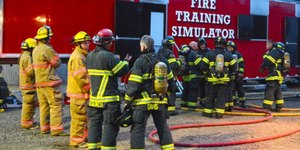
SAFER grant applicants’ success will be partly determined by how well they match up with this list of priorities
The goal of the SAFER grant program is to assist local fire departments with staffing and deployment capabilities to respond to emergencies and to assure that communities have adequate protection from fire and fire-related hazards.
Local fire departments accomplish this by improving staffing and deployment capabilities so they may more effectively and safely respond to emergencies. With enhanced staffing levels, communities should experience a reduction in response times and an increase in the number of trained personnel assembled at the incident scene.
You can also make the argument that more on-scene staff saves individuals money by reducing the amount of time to contain the emergency — thus reducing the human or property damage. More staff also reduces the risk of death or injury to firefighters — thus reducing those associated costs to municipalities.
Volunteer and combination departments, along with local, regional, state and national originations, can apply for SAFER funding to recruit new firefighters and to retain existing firefighters. These applicants can tailor a program for their area that can last up to four years.
The purpose of this funding is to create a net increase in the number of trained, certified and competent firefighters capable of safely responding to emergencies within the recipient’s response area.
SAFER applications are reviewed through a three-phase review process. First, applications are electronically pre-scored and ranked based on how well they align with the funding priorities outlined in this notice.
Then applications are scored competitively by no less than three members of the peer panel review process. Finally, applications are evaluated through a series of internal FEMA review processes for completeness, adherence to programmatic guidelines, technical feasibility and anticipated effectiveness of the proposed project(s).
As part of the process, applicants will be judged on the following eight criteria.
In the past, SAFER recruiting and retention applicants have been able to develop a recruiting program based on an incentive or a series of incentives that will help them to recruit and retain firefighters in their coverage area. With the 2016 SAFER application, FEMA developed a priority ranking for incentives for recruiting and retention.
These incentives carry a high, medium and low priority like the rankings in AFG. Just like AFG, if your incentive program consists of higher-priority incentives, your application will score higher. Likewise, if your incentive program consists only of low-priority items, there is less chance that it will be funded.
The priorities are laid out in detail on pages 44 to 50 of the Notice of Funding Opportunity. This section also includes a list of ineligible items for the SAFER recruiting and retention program.
Copyright © 2024 FireGrantsHelp.com. All rights reserved.
